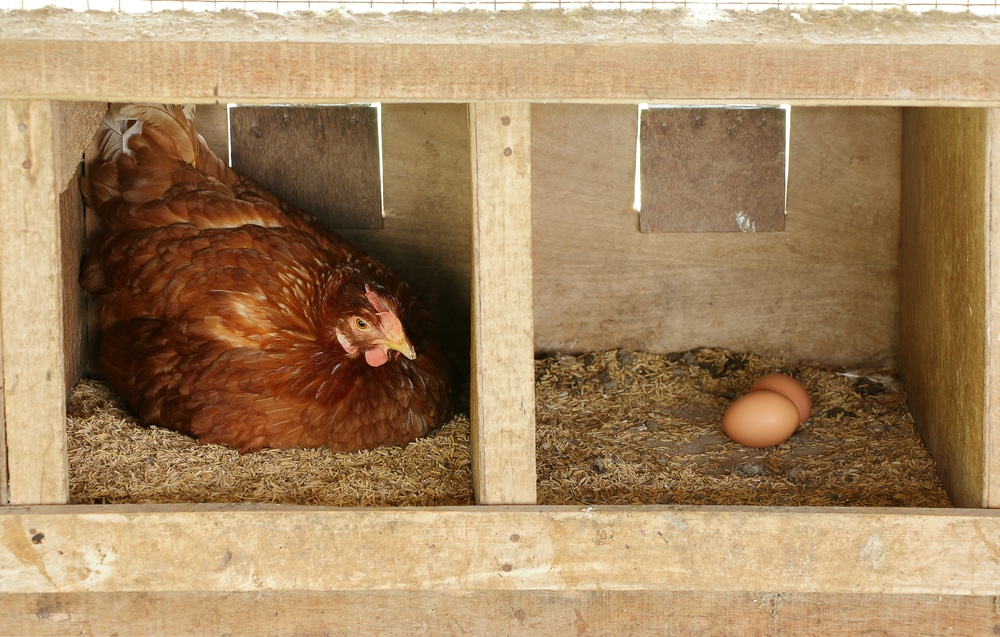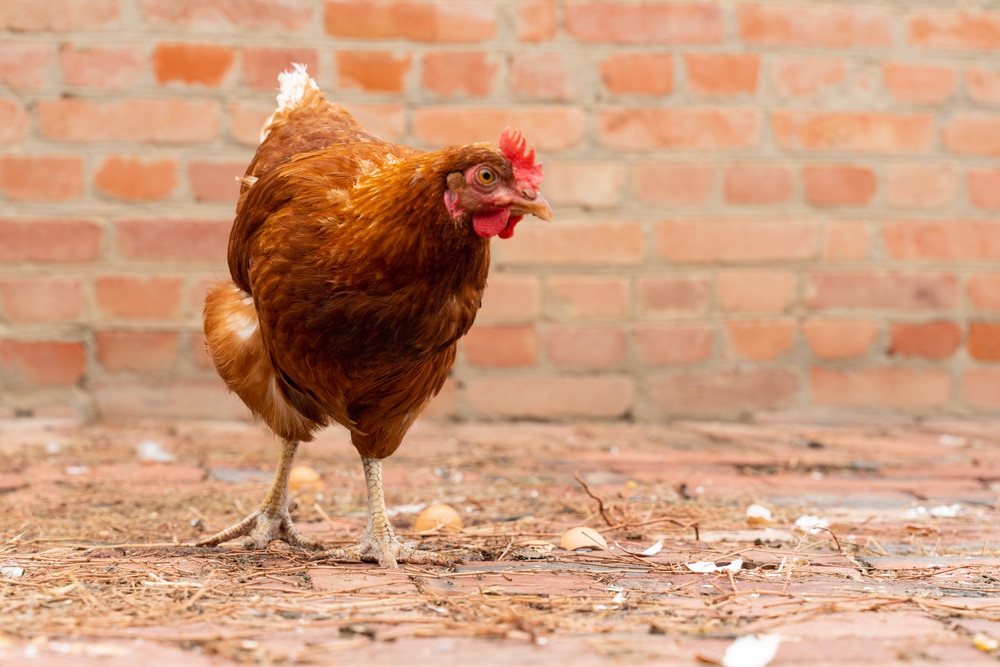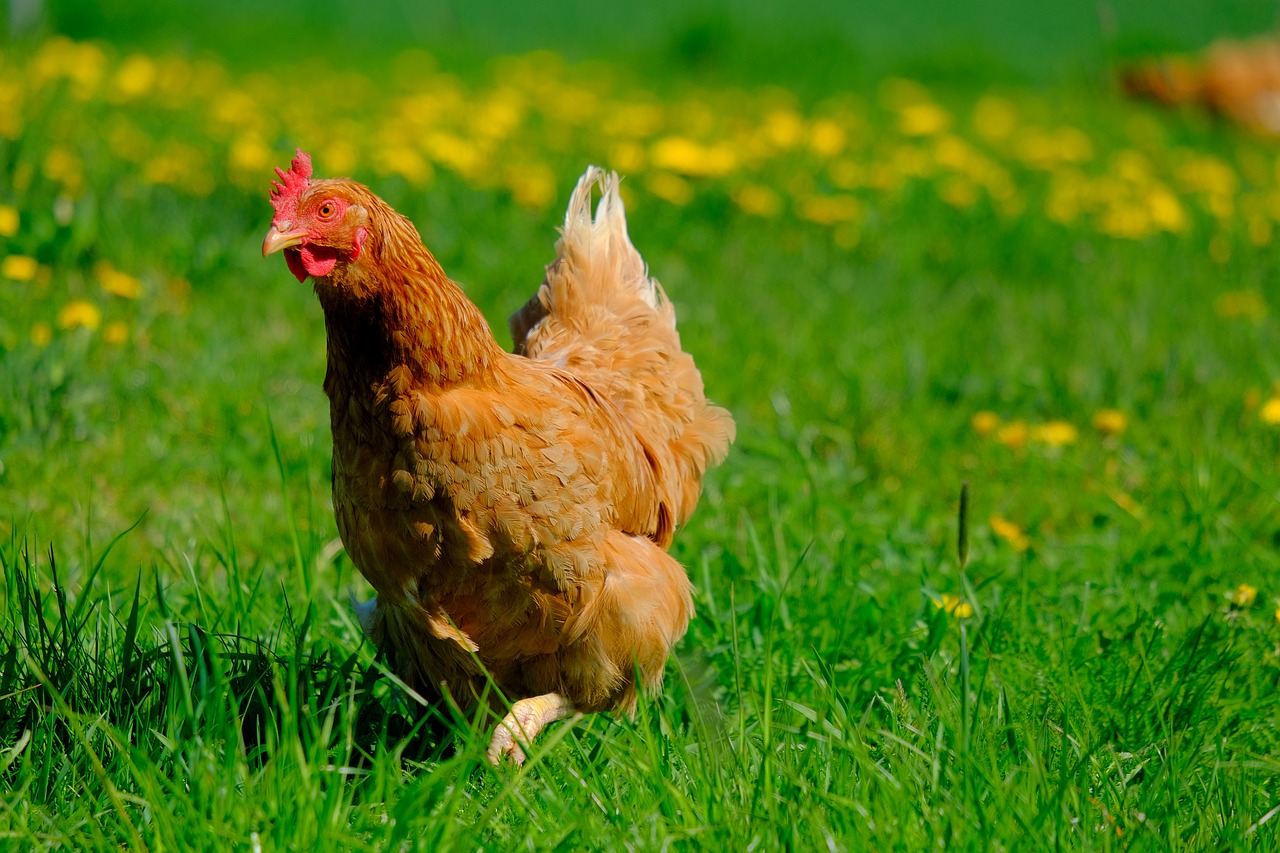How much does it cost to own chickens?
Unsurprisingly, that’s a question that doesn’t have a concrete answer – but we can help give you a general idea based on average costs.
If you’re thinking about raising chickens, you might be wondering how much money you are going to need to set aside each month to care for them.
Luckily, raising a chicken is one of the most economical decisions you can make.
Not only are chickens themselves relatively inexpensive, but they offer a return on investment – after all, they produce a valuable item for you each and every day (or most days, depending on the type of chicken).
What other pet provides you with free food, free fertilizer, and free pest control?
Just the chicken, of course.
That’s not to say that raising chickens is totally free, though. In fact, there are some expenses you will need to take into account. In this article, we will walk you through all of the monetary factors that go into caring for a flock of chickens.
How Much Do Chickens Cost?
Before you start considering any other factors, you need to think through the most basic expense – buying chickens. It’s pretty much impossible to raise chickens without purchasing the actual birds themselves.
The costs here vary. If you’re buying baby chicks, the prices can range from anywhere between a few cents apiece to more than a hundred dollars apiece. That’s because the price of chicks varies depending on:
- Breed (rare breeds cost more)
- Your location
- Sex of the chicken (males are less expensive than females)
- Age
Most baby chicks can be purchased from hatcheries or from local suppliers for around $2 or $3 a piece. You can also purchase started pullets, which are young chickens that are four weeks old. These cost up to $25 apiece, while hens that are already laying can cost anywhere between $10 and $100.
Don’t forget – if you buy from a hatchery, you will also need to cover shipping costs. Sometimes, these are waived if you buy a certain number of chicks.
How to Save Money Buying Chicks and Chickens
There are plenty of ways you can cut costs when purchasing your chicks and chickens.
First, look around to local sources to see if anybody is looking to give away free birds. You’ll want to be extra vigilant with this. Make sure the chickens are healthy and don’t have any known conditions. If possible, determine that they come from good breeding stock, too.
You can also look into discounts from various hatcheries. Some offer specials at certain times of the year. You probably won’t get any chickens for free, but you may get them at a reduced cost. You can save money by purchasing unsexed chicks or male chicks, too, if that works for your ultimate plans.
How Much Does it Cost to Feed Chickens?

The next factor that you need to consider is how much it is going to cost to feed your chickens. Chickens need different types of food at all of their various life stages. Chick starter will generally be the most expensive, while layer and broiler feed are much cheaper and usually easier to come by.
On average, it will cost you between ten and fifteen cents per chicken per day. That’s for basic feed. If you want organic feed, you’re going to be paying much more money – often, more than fifty or sixty cents per chicken.
Don’t forget to factor in things like calcium supplements. Oyster shells are normally sold in large, fifty-pound bags (although you can buy it in smaller increments, too) and it costs around twenty-five cents per pound.
You will also need to pay for occasional treats, if you choose to feed these, like black soldier fly larvae or scratch grain. The price of these vary, but many treats can be made at home to help you save money.
How to Save Money While Feeding Chickens
The average chicken needs about one half to a full cup of feed each day. Free-choice feeding is recommended, as this will help your chickens gain and maintain weight in a healthy way.
Some people advise against free-choice feeding because the birds will park themselves at the feeder and eat you out of house and home!
However, this is very rare and most chickens will not gorge themselves when given the opportunity.
Another way to cut costs when feeding chickens is to allow them to free-range. While you will still want to supplement with regular feed every now and then, free-ranging can help fill in a lot of the gaps in their diet and will reduce their reliance on the feed you put out. Plus, it’s good for their health, so you may avoid expensive medical costs later on.
You can even let your chickens free-range in the compost pile! There are plenty of tasty morsels they will find in there, including bugs and vegetable scraps, so it’s a smart way to reduce your food costs while also getting your compost pile turned for free.
Another way you can cut costs is to produce your own food. You can catch bugs for your birds (this is a great way to get pests out of your garden, too!) and toss them into the chicken yard. You can also grow a chicken-friendly garden and produce your own grains and vegetable scraps.
Many people even grow their own soldier fly larvae to help feed their chickens! A great source of protein, soldier fly larvae are easy to grow right in your own basement.
You can also sprout your own fodder, which involves sprouting grain like barley to help improve its nutritional content. This is something that’s free to do (minus the initial cost of the grain, of course) and can really extend your budget.
How Much Do Chicken Supplies Cost?
You’ll need to factor in other expenses when it comes to raising your chickens, too. Once you have your coop built, you’ll need to fill it with supplies like feeders, waters, nest boxes, and roost bars.
You can easily build your own nest boxes and roost bars or repurpose them out of materials you have lying around. For a nest box, for instance, you could use an old wooden or plastic milk crate. You can turn a stick into a roost bar or simply use a chunk of 2×4.

Otherwise, expect to spend at least $15 to $20 apiece to purchase premade nesting boxes or roost bars. Although these costs can add up, this kind of purchase is a good idea if you don’t think you have anything that can be recycled into your necessary chicken gear.
You will also need to pay for chicken feeders and waters. The average feeding trough is about $5 to $20, depending on what material it’s made out of (plastic or galvanized metal) and what kind of feeding capacity it has.
It’s not difficult to find inexpensive chicken feeders and waterers, but you get what you pay for – the quality might not be as high, or will the capacity.
You can DIY these items, too, to save a bit of cash. For adult chickens, you can use an old dog bowl to water your chickens – but keep in mind you’ll have to refill it more often and you’ll have to clean it more frequently, too, since they’ll be more likely to poop in it. You can make your own feeders out of items like PVC pipe or trash barrels, too.
How Much Does Medical Care for a Chicken Cost?
Ideally, this is an item that you won’t have to include in your chicken budget. When chickens are raised properly, they don’t require much in the way of medical care. Just make sure your chickens are given regular natural dewormers – like apple cider vinegar and garlic – and you probably won’t have to pay more than a few dollars per month for your entire flock.
If your chickens get sick, however, that’s another story. Veterinary care for chickens is hard to come by – often, you’ll need to pay a bit more to visit a vet that specializes in small animal care and chickens in particular.
Try to avoid this expense if possible, because often, veterinary care is so expensive that you’ll be forced to forego it altogether.
How Much Does a Chicken Coop Cost?
Next up is one of the most difficult costs to estimate for you, but it’s also one of the most important. Luckily, a chicken coop is a one-time expense, so once you build it the first time, you won’t have to worry about covering this expense in future years.

You can either build your own chicken coop or you can purchase one from the store. If you buy a premade chicken coop, expect to spend anywhere between $200 and $2000. These will have all the features you need to get started, and are often very sturdily built.
You can also build your own chicken coop, and while this will be much less expensive – a simple, basic structure could cost $100 or less – but you will need to have some construction skills in order to be successful and actually save money.
When you build your own chicken coop, you’ll need to factor in expenses for all lumber, hardware (including nails, screws, and other fasteners) along with materials for nest boxes and roost bars.
You can easily save money on chicken housing by following a free online building plan or by using repurposed or recycled materials. If you have a spare garden shed on your property, why not convert it into a coop? You could also build a portable coop out of materials like an old trailer.
When you start planning out the cost of your coop, don’t forget to plan for everything you plan to put into the coop too. We already mentioned the cost of various supplies, but you’ll also need to supply your chickens with bedding that you change out on a regular basis. You can use all kinds of free or cheap materials, like sawdust, wood shavings, or even dried leaves, but you will want to factor this in as an expense if you don’t have a reliable source of bedding.
If you plan on putting a dust bath in your coop, you’ll also need to pay for things like diatomaceous earth. This is very inexpensive, however, and shouldn’t put a huge dent in your budget.
What Are the Most Economical Chicken Breeds to Raise?
If you want to raise chickens to help put a dent in your monthly grocery bill, you might want to consider raising some of the following wallet-friendly breeds.
Cochins
Cochins aren’t the most popular chickens out there, but there are plenty of excellent reasons to raise these hardy birds. They lay large amounts of large brown eggs and are also pretty mellow around humans.
There are both bantam and full-sized Cochins available, but the full-sized versions tend to be more productive. Bantams, on the other hand, eat a lot less, so it’s a trade-off.
Easter Eggers
If you are new to raising chicken sand want to raise them primarily for eggs, you might want to consider Easter Eggers. Not only do they lay lots of eggs, but they lay beautifully colored eggs, too! The color of the eggs varies depending on the genetics of the bird – while some are blue or pink, others are green.
Easter Eggers are also known for being small and they don’t eat a ton of feed, either.
Marans
The Maran is a tough, disease-resistant bird that does well in the cold and is known for being quiet and easygoing. These chickens don’t require a lot of work but lay chocolate-colored eggs – up to 250 per year, in fact. You’ll get a great return on all of your investment and hard work!
Rhode Island Reds

Another popular heritage bird is the Rhode Island Red. This chicken lays up to five eggs per week and also can be raised for meat. Dual-purpose breeds like this one are some of the best if you want to save money while raising chickens.
They are known for being hardy and have some of the best genetics when it comes to resisting disease. Plus, you’ll get both eggs and meat!
Jersey Giants
Another heritage chicken breeds the Jersey Giant. It produces up to 200 eggs each year and is one of the largest purebred chickens you can buy. Therefore, it’s a fantastic bird to raise for meat.
Delawares
Delaware chickens are some of the best egg-producing birds. As heritage birds, they are known for being hardy and resilient plus, they are cold-hardy and quite friendly, too.
Making Money With Your Chickens
Lots of people raise chickens with the ultimate goal of making some cash on this side. This is a great way to offset some of your expenses, but it’s not something you should plan on doing during the first year you raise chickens. You will want to dedicate some time to working out the kinks, after all.
There are several ways you can get some of your money back when you raise chickens. One of the easiest ways to do this is to sell live birds. You’ll want to pay attention to restrictions and regulations in your area, but usually, you can sell baby chicks for a minimum of $1 apiece – often more, depending on the breed and where you live.
If you are willing to invest a little more time in raising your chickens, you can sell started pullets for $15 to $25 each or laying hens for $25 to more than $100, depending again on the breed and your location.
Fully-grown chickens are worth a lot more than chicks because there is less risk when purchasing them. Baby chicks often die for no explicable reason, and this risk is minimized with a bird that has matured a bit more. Plus, you’ll have more time and money in raising them, so the extra cost makes sense.
Selling live chickens isn’t the only way you can make money! You can also sell your eggs. You will want to price these carefully, basing your numbers on the type of eggs you are raising and where you live.
Most people can fetch $3 to more than $6 or $7 per dozen! To figure out how much you should charge for your eggs, you should keep track of your expense and then determine how much you would like to profit from your work.
You can also sell meat. You’ll make more money by selling top cuts, like chicken breasts (versus thighs and drumsticks) and by raising organic meat. You can expect to get $3 or $4 or more per pound – often more, if you’re raising prime cuts of meat.
Finally, you can also sell chicken feathers. Some chickens have beautiful feathers that are perfect for crafting and for people who tie flies for fishing.
Is the Cost of Raising Chickens Worth It?
If you’re raising chickens solely to cut down on the amount of money you spend at the grocery store each week, we have bad news for you – raising chickens is not the most economical thing you can do. Frankly, eggs from the grocery store will be cheaper.
However, most people – likely yourself included – don’t jump into raising chickens solely because they think they can save a buck. Usually, they do it for another reason, too, like a desire for self-sufficiency or an interest in eating healthier food. The quality of eggs that you will get when you are raising your own chickens is far superior to that which you will find at the grocery store.
Plus, there are way more benefits to raising chickens than just the dollars and the cents. Raising chickens will provide you with a free source of fertilizer and pest control, and you will have an easy place to dispose of all of your kitchen scraps, too.
